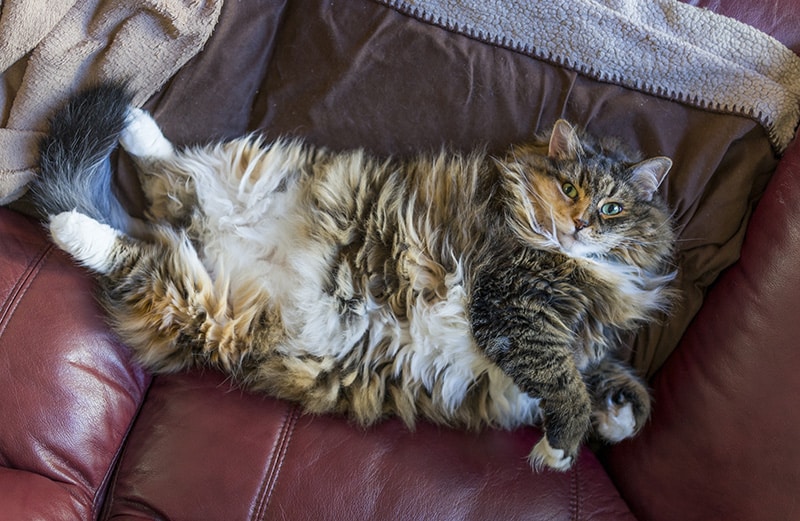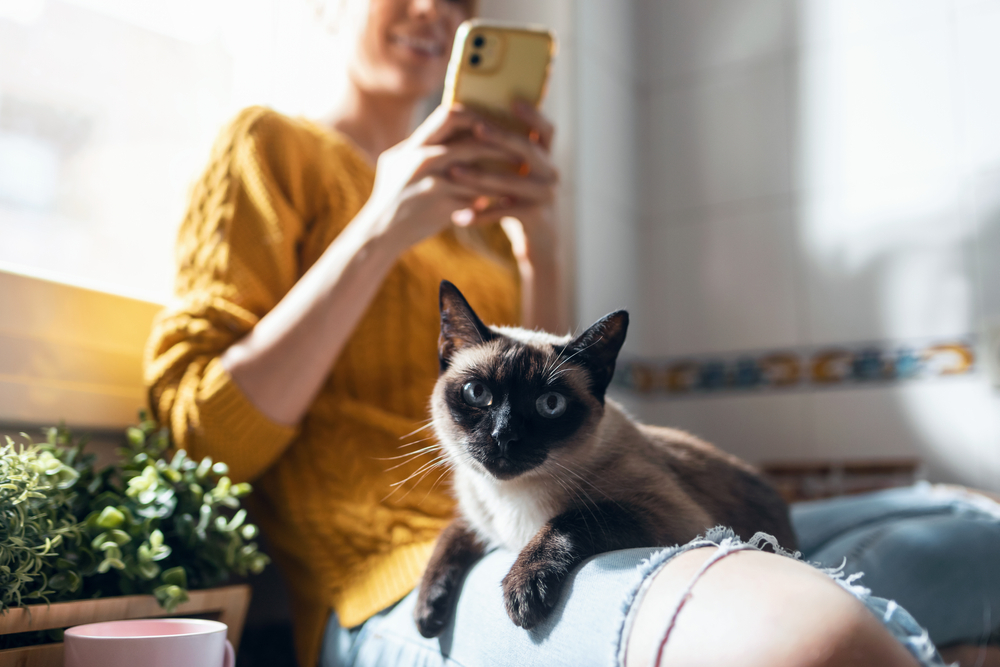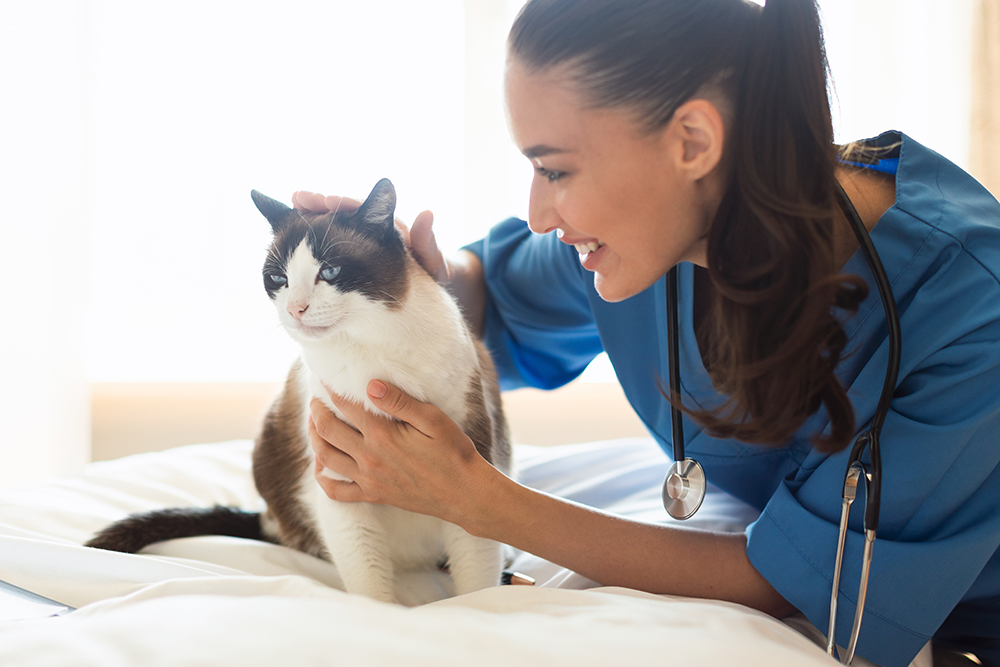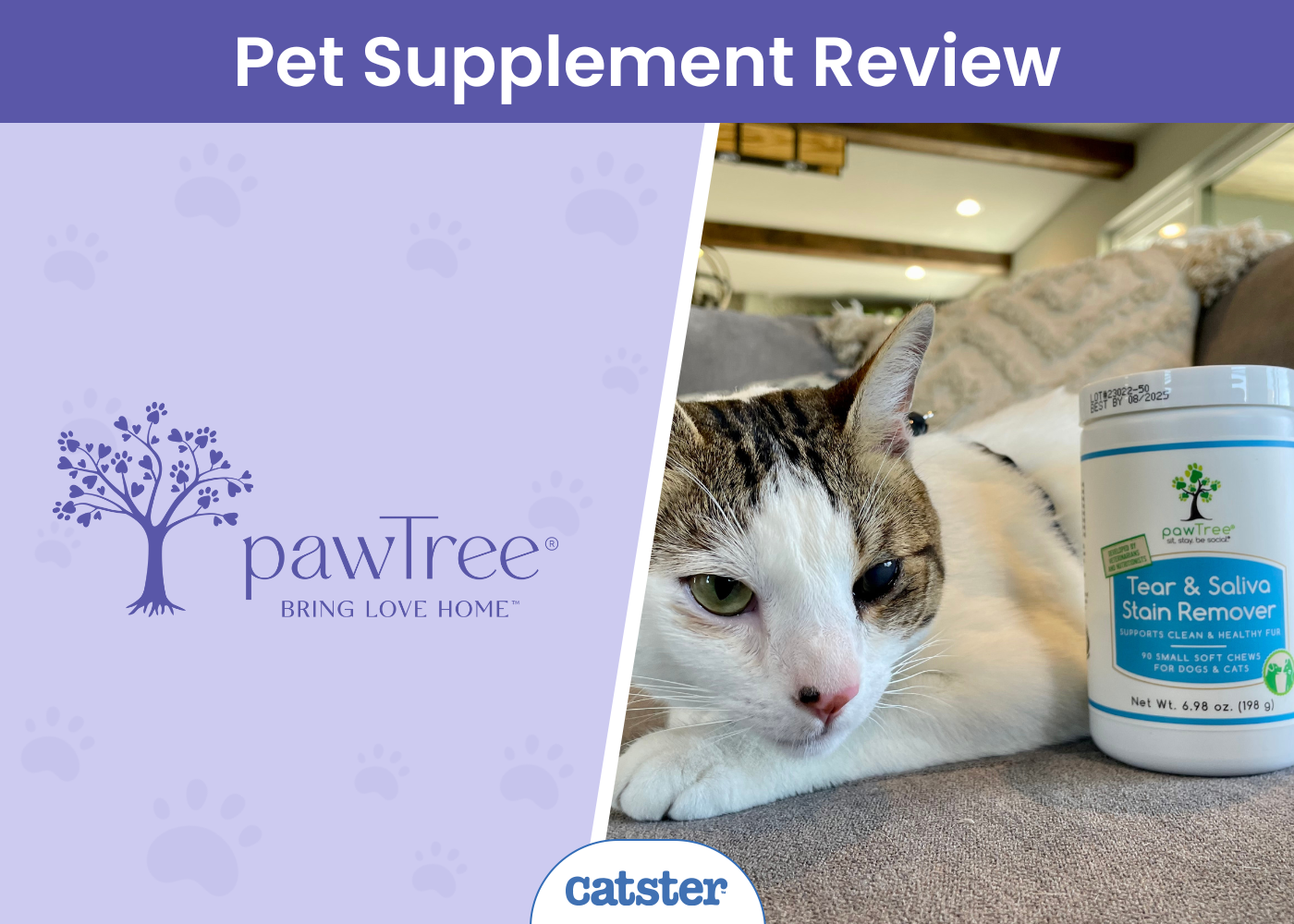Obviously, cats have stomachs, but that doesn’t necessarily mean that they work the same as ours. While you might have heard some of the facts below already, we’re sure that there are a few cat stomach facts that might surprise you. If you’re wanting to learn more about how your feline friend’s digestive system works, particularly when it comes to their tummies, keep reading.

The 7 Facts About Cat Stomachs
1. Cats Only Have One Stomach, and It Isn’t Very Big
Some people believe that cats have more than one stomach. Whether that’s because someone simply gave them the wrong information or because they mistook the primordial pouch for an extra tummy, it’s simply not true.
Cats only have one stomach, but surprisingly, it’s pretty small—roughly the size of a ping pong ball. This means that the average cat’s stomach can only hold about 2–4 tablespoons of food at a time. However, cats can also gorge themselves on meals, which is why you sometimes see them regurgitate their food immediately after eating it.
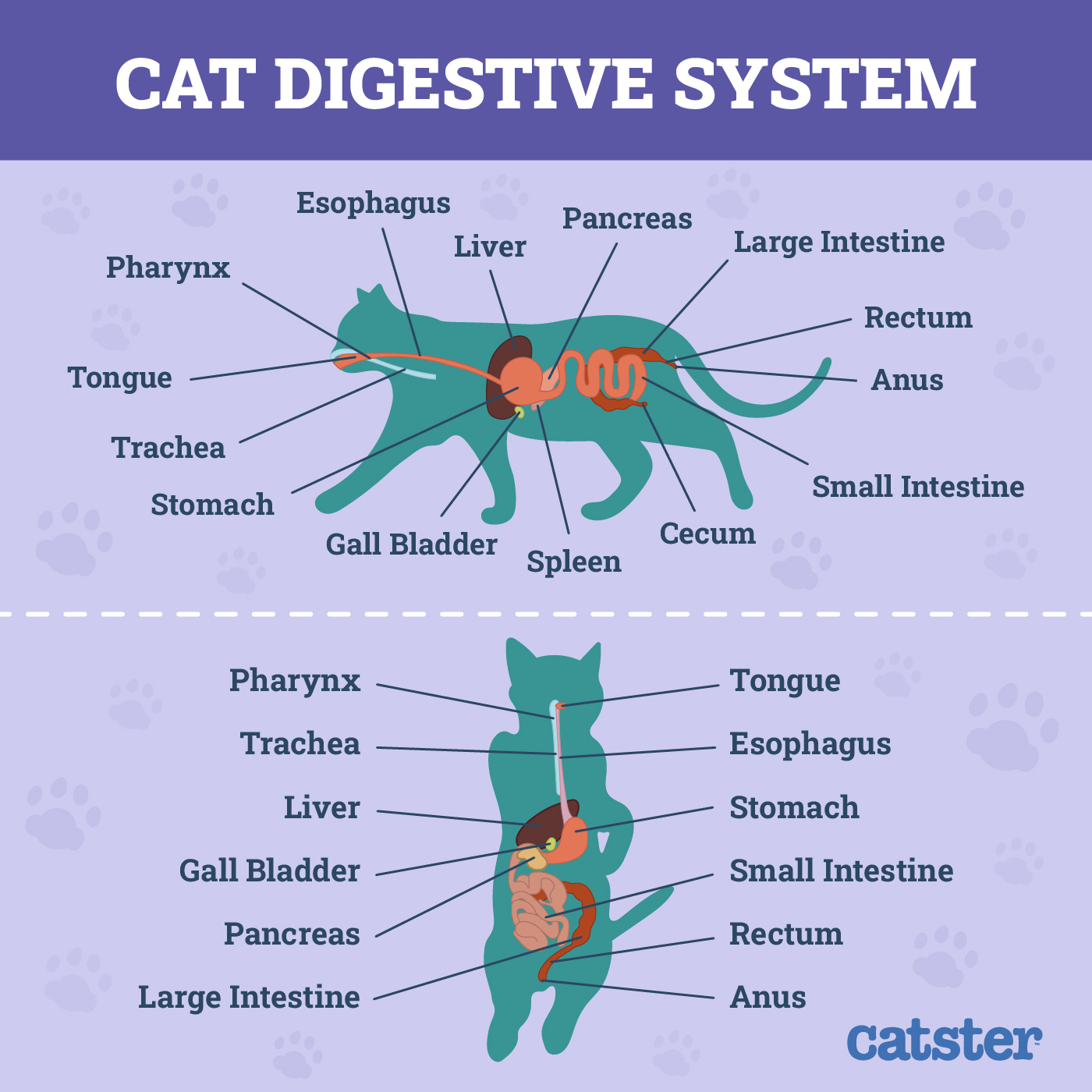
2. Their Stomachs Can’t Digest Hair
Cats have a complex digestive system, and for animals that are known to digest small prey, you’d think they’d be able to digest hair too, but that’s not completely true. When cats groom themselves, which makes up 30–50% of their day, they also swallow large amounts of hair. This hair often comes back up in the form of hairballs.
The reason for this is because hair is made of keratin, which is a fibrous structural protein that is resistant to a cat’s digestive system. Instead of being fully digested, it either passes through the intestines and is excreted or is regurgitated as a hairball.
3. Eating Several Small Meals Throughout the Day Is Easier on the Stomach Than Eating One Large Meal
In the wild, a typical feral cat might eat seven or more meals throughout the day. Again, their stomachs are small and can’t hold much food. So, when it comes to our house cats, splitting their daily calorie allowance into two or three meals throughout the day is going to feel much better on their bellies than if you were to only offer one bigger meal.
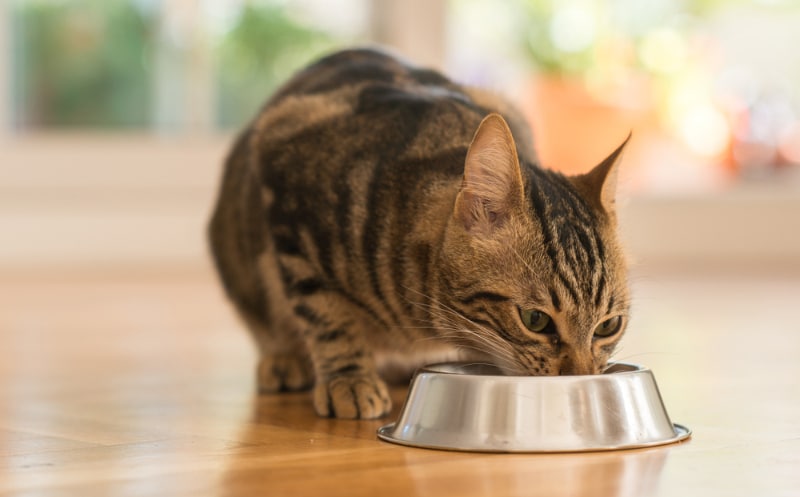
4. Their Stomachs Are Highly Acidic
A cat’s stomach is a very acidic environment; it has to be in order to properly digest their food. Cats are obligate carnivores and are often consuming large amounts of meat, as well as the occasional small bone or feather for feral cats. In fact, stomachs with too low of acidity can cause numerous health issues, such as acid reflux, indigestion, and regurgitation.
5. Cats Get Hungry Again 8–10 Hours After Eating
Cat stomachs have a simple structure. Once the stomach fills with food, it then empties within a few hours and moves on to the small intestine. About 8–10 hours after eating, the stomach starts to send signals to the brain letting it know it’s time to eat again. However, if cats go too long without eating (about 12 hours), it can cause the stomach to fill with gastric acid and even lead to vomiting. This is another reason why feeding cats several small meals throughout the day is ideal.
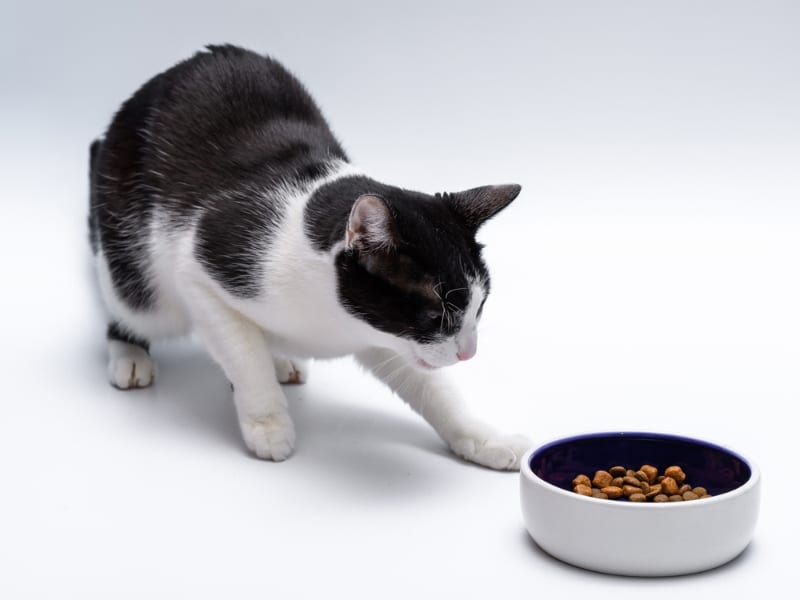
6. Digestion Takes Anywhere From 10–24 Hours
The stomach is a crucial part of the digestive system, but because cats are so small, it only takes about 10–24 hours for food to be completely digested compared to a human’s 2–5 days. To reiterate from the last fact, food only stays in a cat’s stomach for a few hours before moving on to the small intestine.
Learning about what your cat can and cannot eat is a crucial part of keeping them happy and healthy! Choosing a bowl to serve cat-friendly foods in is another important decision pet owners face. Satisfy the specific needs of your cat with the innovative design of the Hepper NomNom Cat Bowl. Learn why it’s our (and our cats!) favorite food and water dish here. At Catster, we’ve admired Hepper for many years and decided to take a controlling ownership interest so that we could benefit from the outstanding designs of this cool cat company!
7. People Sometimes Mistake the Primordial Pouch for a Second Stomach
When you watch your cat walk or run, you might notice that they have a low-hanging part of the belly that sways back and forth. While some people have mistaken this for a second stomach, it’s actually the primordial pouch.
Having a primordial pouch does not mean your cat is overweight, even if it sometimes looks like it (and some cats are, in fact, overweight). Instead, it is made up of fur, skin, and fat, and it’s thought that cats have this for a few reasons: an added layer of protection of the vital organs during a fight, for extra flexibility as they run, and an extra place to store energy as fat reserves.
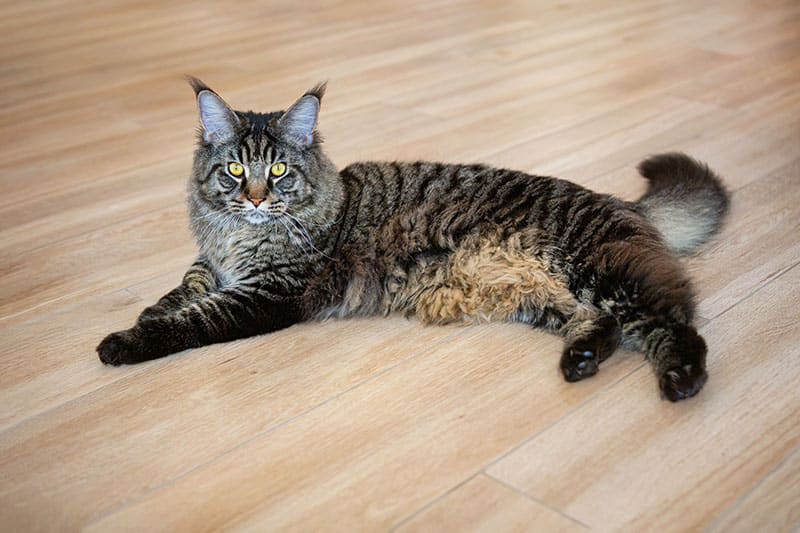
Conclusion
A cat’s stomach is designed and adapted to suit the diet and lifestyle of a cat. It plays an important part in digestion and the movement of food to the intestines where the nutrients can be absorbed. While you might not think about this small organ much, learning some of the unique facts about the stomach can help you to better understand your cat and how their body functions.
Featured Image Credit: Kristi Blokhin, Shutterstock
Contents
- The 7 Facts About Cat Stomachs
- 1. Cats Only Have One Stomach, and It Isn’t Very Big
- 2. Their Stomachs Can’t Digest Hair
- 3. Eating Several Small Meals Throughout the Day Is Easier on the Stomach Than Eating One Large Meal
- 4. Their Stomachs Are Highly Acidic
- 5. Cats Get Hungry Again 8–10 Hours After Eating
- 6. Digestion Takes Anywhere From 10–24 Hours
- 7. People Sometimes Mistake the Primordial Pouch for a Second Stomach
- Conclusion

